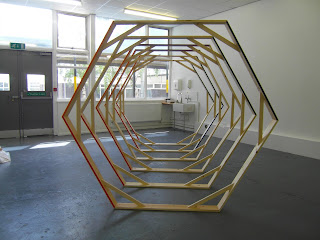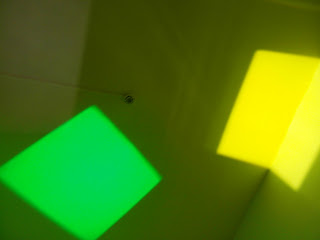K E R R Y J A C K S O N
Tuesday, 12 July 2011
Monday, 11 July 2011
Tuesday, 14 June 2011
CUSPeditions, PRINT SALE 22ND JUNE, PEDESTRIAN GALLERY LEICESTER

'CUSP is pleased to announce a new project: CUSPeditions, featuring work by 20 artists in editions of 25 signed and numbered A3 prints. The prints will be exhibited for one night only, 22nd of June at Pedestrian Gallery, Leicester, after which they will be available to buy from cuspblog.blogspot.com.
Featured Artists:
Gino Attwood, Deborah Balinger, Jessica Dickens, Antonia Eleftheriou, Adam Gillam, Daniel Goodwin, Sam Hirst & Clark Mitton, Kerry Jackson, Sam Jones, Daniel Kelly, Anna Lucas, Stephen Lynch, Abigail Morris, Avnish Panesar, Eric Rosaman, Jamie Scott, Jack Squires, Emily Warren, Callum Whitley, Anoushka Wroblewski
Editions are priced at £10 each with all proceeds going towards a new artist-led gallery and studios in Leicester.'
Come buy my print!
DMU FINE ART DEGREE SHOW, LEICESTER
The DeMontfort University Fine Art Degree Show opens Friday 17th June and runs til Thursday 23rd June.
Private view: Friday 17th 5.30pm-8.30pm
Pictures of my work to be shown 'Define Communication!' coming soon...
Private view: Friday 17th 5.30pm-8.30pm
Pictures of my work to be shown 'Define Communication!' coming soon...
DEFINE COMMUNICATION! (DEGREE SHOW) STATEMENT

Communication: ‘The imparting or interchange of thoughts, opinions or information by speech, writing or signs’.
Leading on from the past work of using non-visual language as a medium for art making I have once again used my developed system of colours as substitute for the tactile language of Braille. I have taken the 6 dot-like cell formations of Braille letters and converted these into squares, then assigned each square a colour, forcing the non-visual language of Braille into the visual realm.
In ‘Define Communication!’ the viewer encounters 6 large wooden hexagons displayed in a horizontal tunnel leading to 3 television sets each displaying a series of colour combinations. Viewers are encouraged to walk through the hexagons to view the televisions at close range. In a way each television is tuned into a different programme however the televisions should be viewed together as a whole and read from left to right. The first television displays the colours red and orange, the second purple and green and the third blue and yellow. The colours are vertical rectangles, running the length of the screen. These colours arrive on the screen at what could seem like a random manner.
The number 6 is integral to my work as all my work is formed from a grid of 6 colours. The simplest way for me to display my ideas is through geometrical shapes. So the hexagon should be thought of as a new form for the 6 dotted cell of Braille letter formation and in turn colour can be associated with each side of the hexagon. So each hexagon represents a letter. The hexagonal frames displayed opposite the television screens are only painted on particular sides to spell out the word ‘define’. The hexagons communicate with and command the televisions; they command them to define communication! And this is exactly what the televisions do; the coloured rectangles spell out the above definition of communication.
What’s less obvious is that the films are in fact PowerPoint presentations. The ‘slides’ from the 3 presentations change simultaneously every second to present a new arrangement of colour. They are lacking in the usual speech accompanying a presentation and exist only as colour. Essentially communicating a silent language of colour and informing the viewer in a seemingly subliminal manner. At the ends of the presentations hexagons flash across the screens for 6 seconds to indicate the end.
Maths plays a significant role in my practice. The measurements of the wood and the distance in between the hexagons co-ordinate with the interior and exterior angles found within hexagons. Furthermore all measurements used are multiples of the number 6. This provokes a feeling of equilibrium within the work. My desire for an equilibrium within the work is not wholly dissimilar the aim of the De Stijl artists I am greatly interested in. Other artists that inform my work are artists interested in geometric shapes and colour such as Sol LeWitt and Ellsworth Kelly.
Once the work is exhibited, the language reaches a new audience to read and contemplate it. The work comments on communication and how we communicate with each other as humans. I chose to display the PowerPoint presentations on televisions rather than laptops to adhere to our conventions of communication. In this modern age mass communication is fast and easy made available through the television and the internet. We are notified of worldly events as they happen. This notification is what I am interested in. When does communication become notification? Notification is informative and often authoritative. Communication is more conversational. I see the following pieces as notifications. Notifications about communication itself.
Monday, 13 June 2011
LANGUAGE TRANSLATION PROCESS CONTINUED


The number 6 is integral to my work as all my work is formed from a grid of 6 colours. The simplest way for me to display my ideas is through geometrical shapes. So the hexagon should be thought of as a new form for the 6 dotted cell of Braille letter formation and in turn colour can be associated with each side of the hexagon. So each hexagon represents a letter.
LANGUAGE TRANSLATION PROCESS




Leading on from the past work of using non-visual language as a medium for art making I have once again used my developed system of colours as substitute for the tactile language of Braille. I have taken the 6 dot-like cell formations of Braille letters and converted these into squares, then assigned each square a colour, forcing the non-visual language of Braille into the visual realm.
Sunday, 27 February 2011
Subscribe to:
Comments (Atom)
























